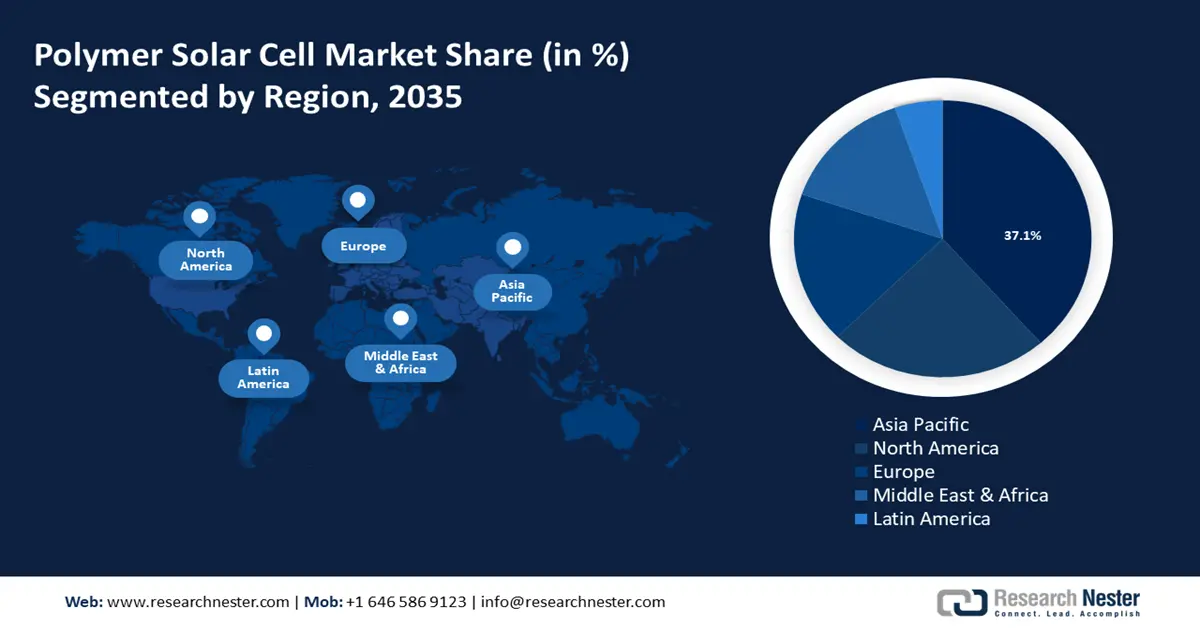Polymer Solar Cell Market Regional Analysis:
APAC Market Insights
Asia Pacific industry is predicted to account for largest revenue share of 37.1% by 2035. The market expansion is due to its strong manufacturing base, technological improvements, and favorable government regulations. Countries such as China, Japan, and South Korea have established themselves as significant participants by investing heavily in R&D, which has accelerated innovation in polymer solar cell technology.
China has emerged as a significant hub for the production and commercialization of solar panels, owing to its low-cost manufacturing capabilities and broad supply network. According to a report released by the Oxford Institute of Energy Studies, China has long led the world in solar manufacturing. In 2020, China produced 67% of the world's solar PV modules and accounts for a sizable portion of worldwide PV cell and polysilicon output. Furthermore, the nation’s tremendous push for innovation and sustainability in the solar energy sector has strengthened its position as a market leader.
The growing population in India has increased the energy demand which is stimulating the demand for renewable sources such as solar energy. According to the United Nations Organization, the population of India reached 1.43 billion in April 2023, matching and eventually surpassing that of mainland China.
In South Korea, the growing demand for wearable solar electronics and electricity is escalating the growth of the polymer solar cell market. Stretchable solar cells that can withstand strain have drawn a lot of attention as a potential energy source since the demand for wearable electronics is growing rapidly. For instance, in January 2024, the world's best stretchable organic solar cell was unveiled by the KAIST research team from the Department of Chemical and Biomolecular Engineering (CBE). The team also revealed the creation of a new conductive polymer material that achieved high electrical performance and elasticity.
North America Market Insights
North America will encounter huge growth for the polymer solar cell market during the forecast period and will hold the second position owing to the rise in renewable energy projects throughout the region. Also, the number of renewable energy projects such as solar farms and installations has significantly increased.
The polymer solar cell market is expanding in the U.S. due to the need for sustainable energy solutions, the increasing knowledge of how traditional energy sources affect the environment, and government incentives encouraging the use of renewable energy. According to the U.S. Environmental Protection Agency, the Inflation Reduction Act, which was passed by Congress in 2022, established federal incentives for energy communities. These incentives include bonus tax credits for the installation of solar and wind power on brownfields, coal communities, and mining sites.
There is a growing demand in Canada for affordable, clean energy, and many manufacturers are prepared to increase their investments in solar cell technology. Since polymer solar cells don't generate hazardous waste, they offer a renewable energy source that is also environmentally beneficial.


